Products for Phenylpropanoids
-
BCN5376
Salvianolic acid C
Salvianolic acid C is a noncompetitive Cytochrome P4502C8 (CYP2C8) inhibitor and a moderate mixed inhibitor of Cytochrome P45022J2 (CYP2J2), with Kis of 4.82 μM and 5.75 μM for CYP2C8 and CYP2J2, respectively.(CAS NO.:115841-09-3)
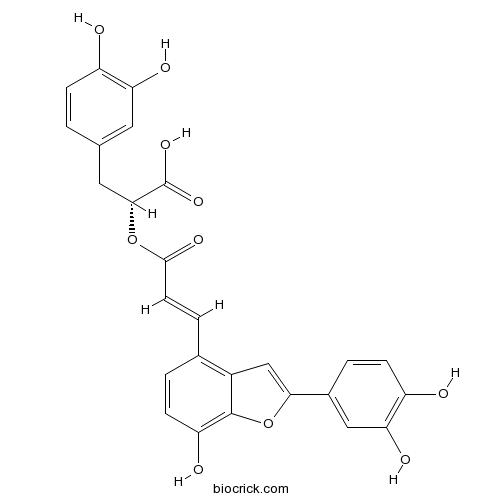
-
BCN4997
Angoroside C
Angoroside C, a phenylpropanoid glycoside isolated from Radix Scrophulariae, has beneficial effects against ventricular remodeling.(CAS NO.:115909-22-3)
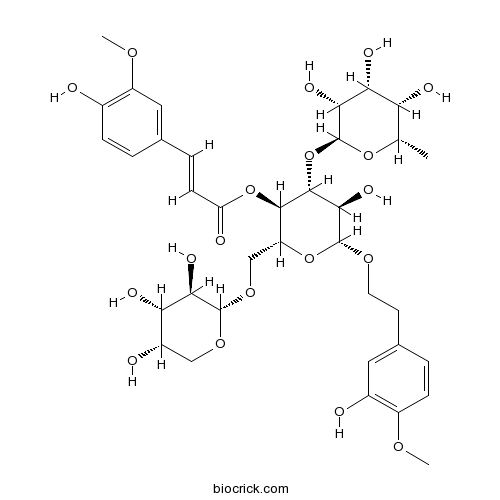
-
BCN6106
Salvianolic acid B
Botanical source: The root of Salvia miltiorrhiza Bge.(CAS NO.:115939-25-8)
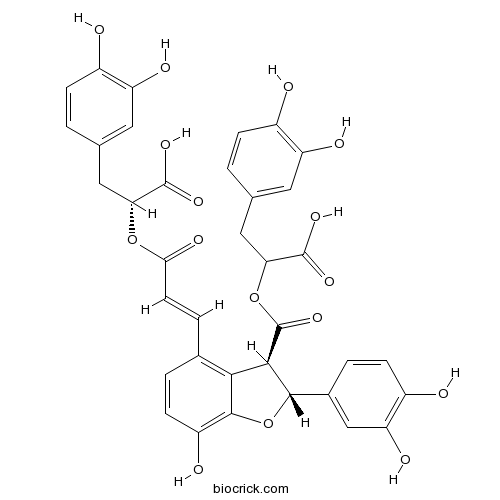
-
BCN2824
9'-Methyl lithospermate B
9''-Methyl salvianolate B is a phenolic compound isolated from Radix Salvia miltiorrhizae.(CAS NO.:1167424-31-8)

-
BCN2923
9'''-Methyl salvianolate B
9'''-Methyl salvianolate B is a methanolic extract of Cynoglossum columnae Ten. plants.(CAS NO.:1167424-32-9)

-
BCN1608
4-O-beta-Glucopyranosyl-cis-coumaric acid
4-O-beta-Glucopyranosyl-cis-coumaric acid is a natural compound isolated formn Nelumbo nucifera Gaertn.(CAS NO.:117405-48-8)
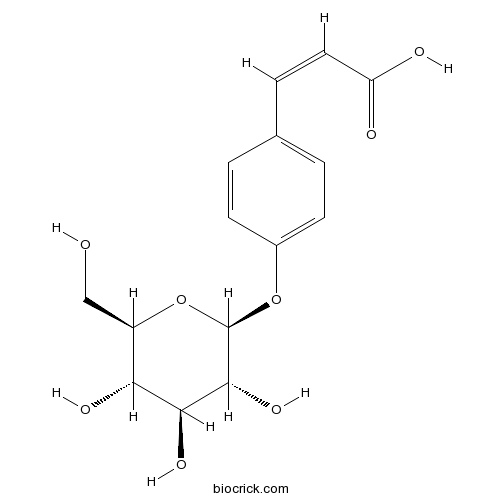
-
BCN6059
Syringin
Syringin is a main bioactive phenolic glycoside in Acanthopanax senticosus, with anti-osteoporosis activity. Syringin prevents cardiac hypertrophy induced by pressure overload through the attenuation of autophagy.(CAS NO.:118-34-3)

-
BCN5912
1,4-Dicaffeoylquinic acid
1,4-Dicaffeoylquinic acid (1,4-DCQA) is a phenylpropanoid from Xanthii fructus, inhibits LPS-stimulated TNF-α production.(CAS NO.:1182-34-9)

-
BCN6090
3,4-Dihydroxycinnamamide
Botanical source: The roots of Berberis thunbergii DC.(CAS NO.:1202-41-1)
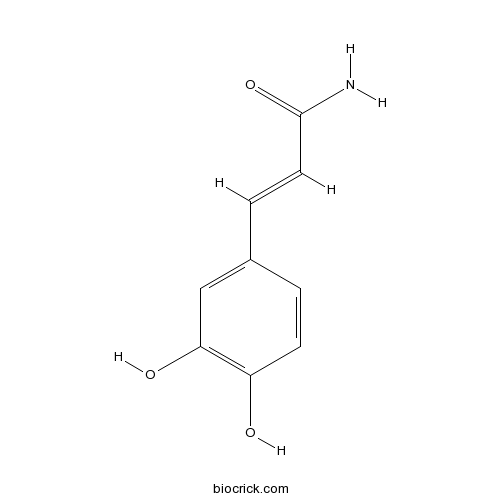
-
BCN7078
Geranyl ferulate
Botanical source: The herbs of Zanthoxylum nitidum(CAS NO.:1206615-69-1)

-
BCN4783
Secodihydro-hydramicromelin B
Botanical source: The herbs of Micromelum sp.(CAS NO.:1212148-58-7)

-
BCN6110
threo-1-C-Syringylglycerol
Botanical source: The roots of Coix lachryma-jobi(CAS NO.:121748-11-6)
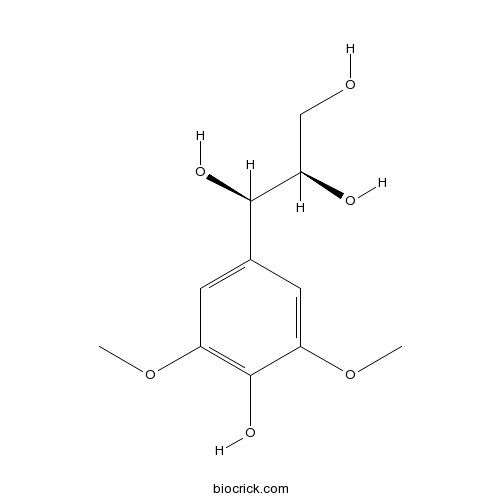
-
BCN4722
Cinnamyl cinnamate
Botanical source: The barks of Cinnamomum cassia Presl(CAS NO.:122-69-0)

-
BCN2533
Monomethyl lithospermate B
Botanical source: The roots of Salvia miltiorrhiza Bge.(CAS NO.:122021-74-3)

-
BCN6119
Tatarinoid A
Botanical source: The rhizomes of Acorus calamus(CAS NO.:1229005-35-9)

-
BCN3442
Methyl 4-caffeoylquinate
Botanical source: The flowerbud of Lonicera japonica Thunb.(CAS NO.:123372-74-7)

-
BCN3484
3-O-Caffeoylquinic acid methyl ester
Botanical source: The fruits of Morus alba L(CAS NO.:123483-19-2)
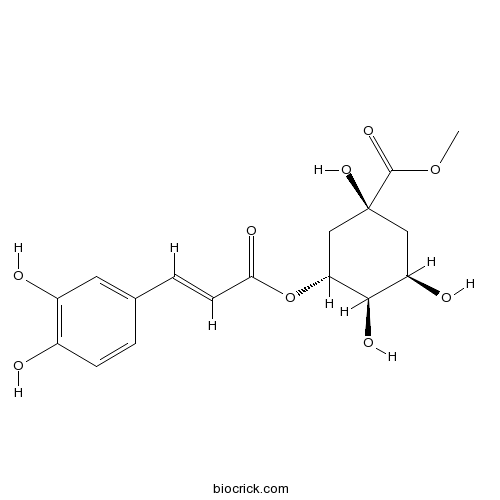
-
BCN5911
1-Caffeoylquinic acid
1-Caffeoylquinic acid is an effective NF-κB inhibitor, shows significant binding affinity to the RH domain of p105 with Ki of 0.002 μM and binding energy of 1.50 Kcal/mol. 1-Caffeoylquinic acid has anti-oxidative stress ability. 1-Caffeoylquinic acid inhibits PD-1/PD-L1 interact.(CAS NO.:1241-87-8)

-
BCN1588
erythro-1-(4-Hydroxy-3-methoxyphenyl)propane-1,2-diol
Botanical source: The roots of Paeonia lactiflora(CAS NO.:1280602-81-4)
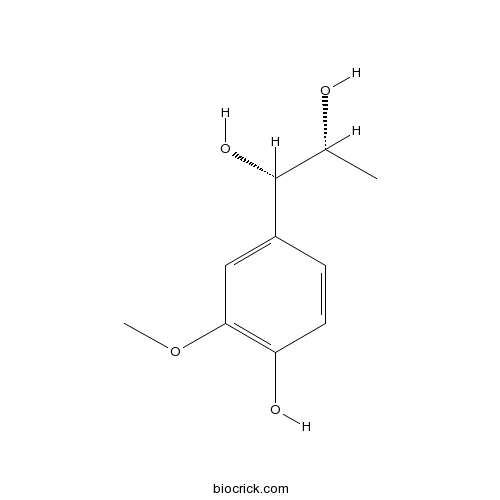
-
BCN4747
O-Geranylconiferyl alcohol
Botanical source: The herbs of Zanthoxylum nitidum(CAS NO.:129350-09-0)

-
BCN6157
3,4-Diacetoxycinnamamide
Botanical source: The herbs of Berberis thunbergii DC.(CAS NO.:129488-34-2)

-
BCN4715
Cerberic acid B
Botanical source: The bark of Cerbera manghas(CAS NO.:1309362-77-3)

-
BCN7753
Benzyl ferulate
Botanical source: The New Zealand propolis.(CAS NO.:132335-97-8)

-
BCN6770
Brandioside
Botanical source: The herbs of Verbena officinalis(CAS NO.:133393-81-4)

-
BCN4712
Eicosyl ferulate
Botanical source: The herbs of Aristolochia debilis Sieb. et Zucc(CAS NO.:133882-79-8)






























